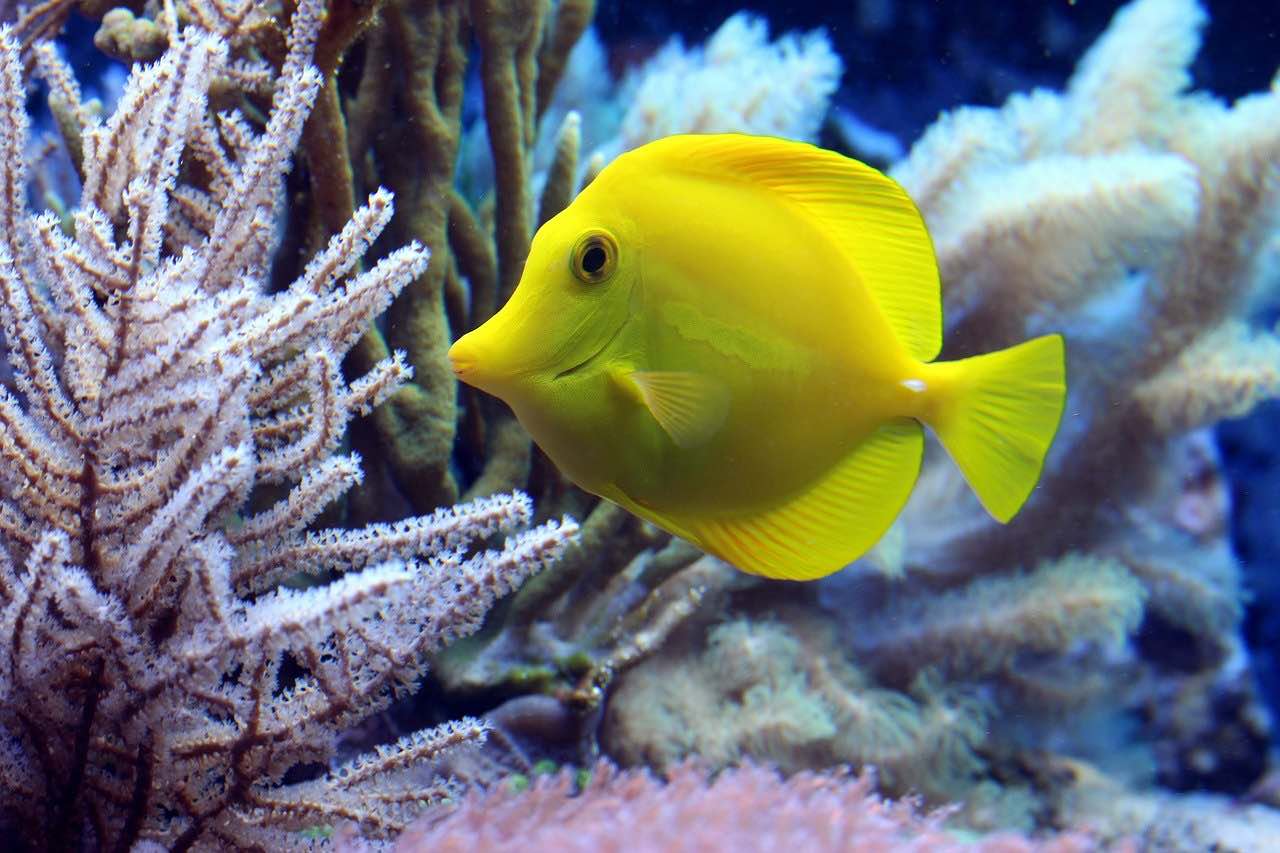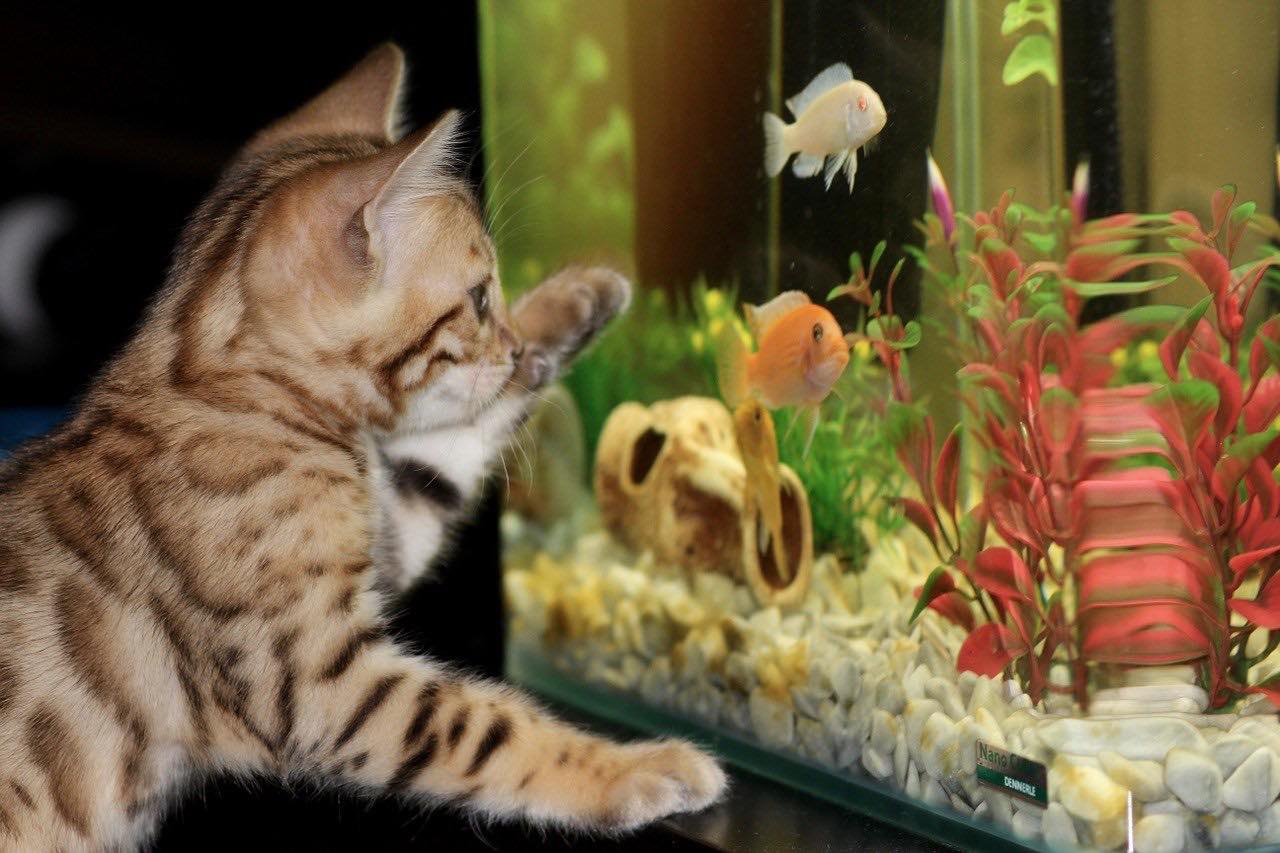Acquiring an aquarium is easy and all, however, maintaining it and ensuring its beauty is a rather tough task. Not to mention, the addition of live plants in your aquarium helps provide it with a natural feel. Your fish are confined to a small tank, so why not make it as lifelike? In this article, we’ll analyze the basics of how you place live plants in your reef aquarium and care for them! You can’t just go around choosing the best-looking plant in your eyes. Considering they’ll stay submerged 24/7, it brings along several prerequisites for your tank.
Choosing The Plant
This point alone requires a lot of analysis before you can make your decision. Some plants might require a higher level of Carbon Dioxide, whereas others might require more light. It is essential that you undergo a thorough research on which plants are best suitable for the tank you own/ will own. Some amateur plants are:
- Lilaeopsis
- Java Moss
- Water Wisteria
- Dwarf Baby Tears
- Amazon Sword
You also need to keep an eye on the plant you’re purchasing. You’ll notice some are older than others by the yellow blemishes on the leaves. Avoid getting any older plants, and the best way to do that is by inquiring with a local fish store!
Substrate and Gravel Addition
These two are essential in building the foundation for an aquarium with live plants in it. The substrate acts as an absorber, and passes on nutrients from the water into the plants. This allows for the plants to properly grow. Alongside this, the gravel helps to provide a base to the aquarium and hold down the roots of the plants. Not to mention, it also provides a nice ashy baseline! To ensure optimal lining, you’ll want to find a fine cut of gravel.
Now that we know why they’re there, let’s know how to lay it on! The plant growth substrate should be about 0.5 inches in thickness, along the bottom of the tank, upon which you’ll place 1.5 inches of gravel to finish it off. There comes along the start of your beautiful base for your aquarium!
Water and Ornaments Addition
Yes this is about adding water, but no don’t fill up the whole tank! In this bit, you’ll be adding about 4 inches of water above the base you’ve just created. Make sure to gently pour the water into the tank, so as to not disrupt the gravel or substrate you’ve placed.
As for the ornaments, it’s not necessary, however, if you have a plan in mind (you probably should by now!), then go for it. Plan out your design of the aquarium beforehand and you’ll have a fun time doing the rest.
Planting Process
After you’ve gone through the initial phase of preparing your tank for the plants, it’s time to prepare the plants themselves! Whenever and wherever you gather your live plants from, make sure don’t endanger the integrity of the plant. This means caring for the plant and its roots. Keep it safe from top to bottom!
Once you’ve gathered your plants, make space in the gravel with your finger. The space ought to be a small concise area, in which the roots of the plant go in (down till the substrate), and then replace the gravel once the plant is in place.
A couple of things that you could do with remembering:
- Plant Placement: Some plants are taller than others, and in this case; you’d enjoy the plants best if you place the shorter ones in front of the taller ones. This creates the best view for you to enjoy
- Different Plants: Some plants don’t always require you to have gravel. It’s best to engage in proper research on what helps your specific plant grow in an optimal manner!
FIlling up the Aquarium
Now that you’ve taken care of all that, you’ve reached the last bit of adding in the water to ensure your aquarium is ready! After painstakingly spending hours on properly fixing up your tank, let your fish enjoy the newly arranged natural arena you’ve built them! However, before you place the fish in, make sure your heater and filter have had time to make up a safe environment for the fhem.
Maintaining Your Plants
All of the essential bits of information we have supplied you with thus far, holds the key to you successfully operating your live plant aquarium. However, there are further bits you need to manage in order to keep it running efficiently.
Using the Right Substrate
Just like with food, there are different types of substrates. It is in your best interest to gather intel on which substrate works best for your aquarium and especially the plants you’ll be placing in them.
Optimum Lighting
Most plants submerged in water, require light as much as plants on land do! So, based on the types of plants in your aquarium, you need to ensure they receive the proper amount of light in order to ensure their growth. For an optimum level of photosynthesis in the plants, you’ll want to get your plants around 12 hours of sunlight in a day. A little variation here and there won’t affect it much, but at least 10 hours.
Algae:
Wherever there’s a damp environment, you can be sure of Algae growth. However, even if it may give your aquarium a ‘rustic’ feel, you’ll want to get rid of it! Since it’s a plant itself, it’ll start competing with your aquarium plants and hinder their growth over time. The best way to deal with this, is to ensure a weekly scrubbing of your tank.
Using the right fertilizer
One of the most important factors for plants to grow! This is where they get their nutrients from. So, it’s of essence that you allow your plants to have the best fertilizer available for them. Whether it be pricey fertilizer, or something specific to the plant itself.
Conclusion
It’s easy to learn the technique of placing in live aquarium plants, and if you’re keen on learning more, you can find it at the quintessential buyers guide. Hopefully you’ve gained all the information you need, and you can now bask in the glory of having created your own natural environment for your fish!








